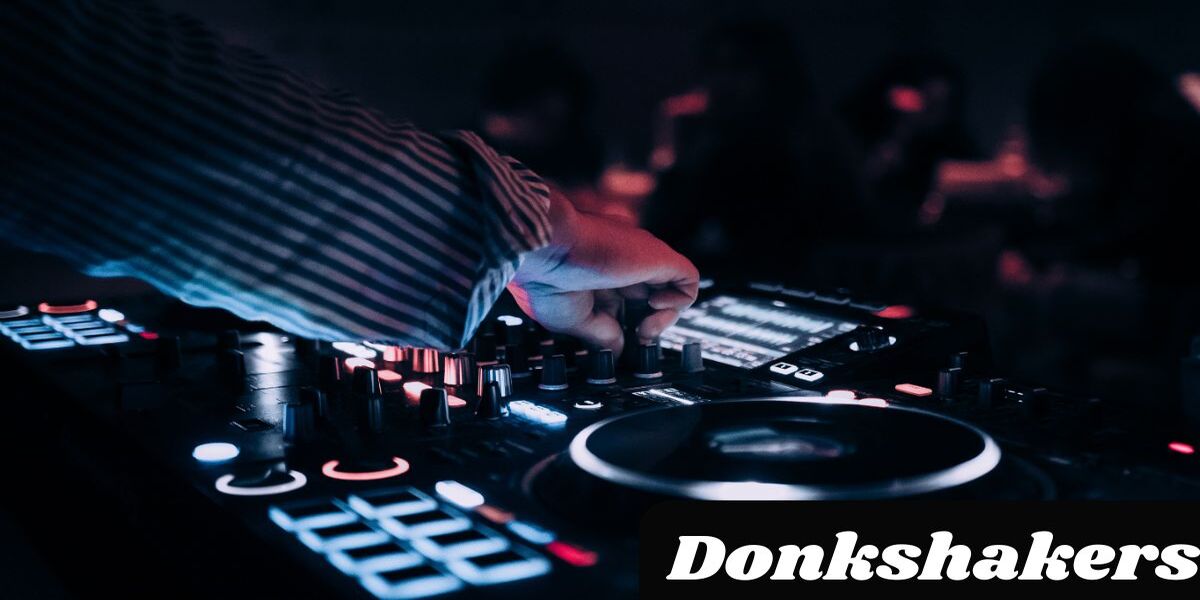Introduction
In the ever-evolving world of audio innovation and underground music culture, one term that has steadily carved a niche of its own is “Donkshakers.” The name might sound quirky or even obscure at first, but to true bass enthusiasts and fans of hardcore club beats, it represents a pulsating revolution. Donkshakers are not merely tools or instruments. They embody a sonic attitude, a visceral love for thunderous low-end frequencies that can physically move you. Originating from niche electronic genres, these bass-heavy devices and software modules have quickly become a mainstay in the creation and enhancement of energetic dance music. As technology continues to blur the lines between traditional production and experimental audio design, donkshakers are emerging as the go-to solution for producers who crave intensity, clarity, and punch in their basslines. From gritty UK bounce tracks to bassline-heavy remixes in international EDM scenes, donkshakers are helping artists and DJs sculpt soundscapes that are unforgettable. But what exactly are they, and why are they gaining so much attention? Let’s break it down.
What Are Donkshakers?
Donkshakers are specialized audio tools, software plugins, or hardware units engineered specifically to emphasize, enhance, or manipulate low-end frequencies, particularly in the realm of donk, bounce, and other bass-forward music genres. The name is inspired by the “donk” sound a distinctive, punchy bass note that is characteristic of bounce music originating in the UK. Over time, donkshakers have evolved to represent any method or device that intensifies the rhythmic thump and resonance of bass elements in electronic music tracks.
Most commonly, a donkshaker refers to a synthesizer preset, VST (Virtual Studio Technology) plugin, or bass booster used in digital audio workstations (DAWs) like FL Studio, Ableton Live, or Logic Pro. However, the term has expanded to also include specialized sound systems and subwoofer settings tailored for maximum donk effect. Whether digital or analog, the goal is the same shake the listener’s core with precision-crafted low frequencies.
Why Are Donkshakers Important?
Donkshakers are important because they address a core need in electronic music production impactful, rhythm-driven bass. In high-energy music genres like UK Bounce, Hard House, Donk, and certain subgenres of techno, the bassline is the heartbeat. Without a strong, well-defined donk element, tracks can feel hollow or lifeless. Donkshakers make sure that every beat hits with the right amount of aggression, clarity, and subsonic power.
They are not just about loudness. They are about control. Through donkshakers, producers can sculpt the exact frequency, envelope, and intensity of a bass hit to fit seamlessly with the rest of the mix. In an era where listeners crave immersive experiences whether through booming headphones, club speakers, or car subwoofers having the ability to control the “feel” of a song is invaluable. Donkshakers enable that level of depth and creativity.
Key Features of Modern Donkshakers
Modern donkshakers boast a wide range of features that cater to both amateur beatmakers and professional producers. One key feature is frequency modulation, allowing users to adjust the character and resonance of the bass hit. This includes tailoring the attack, decay, and sustain of the bass to match the rhythm of the track.
Another important attribute is built-in waveform shaping. Donkshakers often include presets that replicate classic donk sounds while offering customization for unique tones. The inclusion of equalization (EQ) tools within donkshaker plugins makes it easy to isolate frequencies and eliminate muddy overlaps with other instruments.
User interfaces have also become more intuitive. Real-time visualization of frequency curves, drag-and-drop sample capabilities, and automation support are now standard. These enhancements streamline the creative process, making it easier to experiment and innovate without getting bogged down in technicalities.
How Do You Use Donkshakers Effectively?
Using donkshakers effectively requires a balance of creativity and technical knowledge. The first step is understanding your audio mix and identifying where the donk should sit. This usually falls between the low-mid and sub-bass frequencies. Applying a donkshaker plugin to a kick drum or bass track involves more than simply boosting volume. It’s about crafting an auditory signature that complements the other sounds in the arrangement.
Start by selecting a preset that fits the mood of your track. Then, tweak parameters such as pitch, resonance, and duration to fine-tune the sound. Use a spectrum analyzer to ensure that the donk isn’t clashing with other elements like snares or vocals. Layering a donk sound with other low-end samples can add richness, but it must be done with phase alignment in mind to avoid distortion or cancellation.
Another pro tip is automation. Modulating the intensity or frequency of a donk in sync with the beat can create a sense of movement and tension, elevating a flat section of a track into something dynamic and exciting. When used wisely, donkshakers don’t just add bass. They add personality.
Comparing Donkshakers to Traditional Bass Mixers
While traditional bass mixers focus on leveling and balancing low-frequency elements, donkshakers go a step further. They are designed for impact. A standard bass mixer might help ensure your sub-bass is audible across various playback systems, but it rarely offers the type of sound sculpting and stylistic punch that a donkshaker does.
Donkshakers combine EQ, compression, saturation, and sometimes distortion to create a bass presence that cuts through a crowded mix. This makes them ideal for dance music genres where the bassline must dominate. Traditional mixers are great for genres like jazz, rock, or acoustic, where subtleness and clarity are more important than sheer power. But when it comes to electronic music designed to move crowds, donkshakers provide the extra firepower needed to make an impact.

Why Join the Donkshaking Movement?
Joining the donkshaking movement is about embracing a culture of sonic experimentation and rhythm-driven excitement. It’s not just for producers. DJs, audio engineers, remix artists, and fans alike are all part of a growing community that celebrates the unique energy of bass-forward music.
What sets donkshakers apart is their accessibility. With hundreds of free and paid donkshaker plugins available online, anyone with a computer and DAW software can get started. Forums, YouTube channels, and social media groups provide tutorials, sample packs, and collaboration opportunities. The movement encourages creativity over conformity, pushing new artists to experiment with bold, non-traditional sounds.
There’s also a strong sense of nostalgia involved. For many, the donk sound recalls early 2000s rave culture and warehouse parties, blending modern tech with old-school attitude. Being part of the donkshaking movement means tapping into a shared love for music that’s unfiltered, raw, and made to be felt as much as heard.
Elevate Your Sound Now
If you’re a music producer looking to stand out in today’s crowded digital landscape, donkshakers can be the game-changer your sound needs. Their ability to deliver hard-hitting basslines, punchy rhythms, and customizable effects makes them an essential part of any modern producer’s toolkit. But their appeal goes beyond just sound design. They represent a mindset one that values experimentation, excitement, and full-body sonic immersion.
Now is the perfect time to explore what donkshakers can offer. Whether you’re creating music in your bedroom studio or rocking crowds at clubs and festivals, integrating donkshaker technology can dramatically elevate the energy and personality of your tracks. The tools are out there, and the community is growing. With donkshakers, your music doesn’t just speak. It shakes.
More Read: Sdajfasdfa Explained
Conclusion
The rise of donkshakers in audio culture highlights a pivotal shift in how bass is treated not only as a supportive element but as the centerpiece of modern electronic music production. These innovative tools empower producers with precision, allowing them to craft powerful, resonant, and uniquely expressive basslines that define entire genres. From their roots in the donk and UK bounce scene to their adoption across global EDM platforms, donkshakers have proven they’re more than a trend they’re a revolution in sound design. Their ability to merge creativity with technical control offers both aspiring and seasoned producers an opportunity to push boundaries and captivate listeners on a physical and emotional level. Whether you’re a beatmaker looking for new inspiration or a seasoned DJ wanting to energize your set, incorporating donkshakers into your workflow could be the ultimate move. As audio technology continues to evolve, donkshakers are poised to remain at the forefront of bass innovation, reshaping how we experience music from the ground up literally.
FAQs:
What is a donk sound?
A donk is a punchy, resonant bass note often used in bounce and hard house tracks. It has a metallic, percussive tone that stands out in the mix.
Can beginners use donkshakers?
Yes, many donkshaker plugins are user-friendly and come with presets ideal for beginners. They also include tutorials to help you learn quickly.
Are donkshakers compatible with all DAWs?
Most donkshaker plugins are compatible with major DAWs like FL Studio, Ableton Live, Logic Pro, and Cubase. Always check system requirements before installing.
Is a donkshaker a physical device or software?
It can be either. Most commonly, it refers to software plugins, but there are also hardware units and subwoofer systems optimized for donk-heavy sound.
What genres benefit most from donkshakers?
Genres like UK Bounce, Donk, EDM, Hard House, and even Trap and Techno can benefit from the unique bass enhancement that donkshakers offer.
FOR MORE DETAILS: Businesstodesk.com


